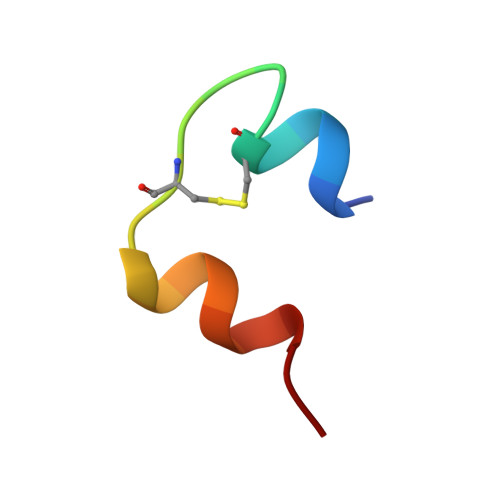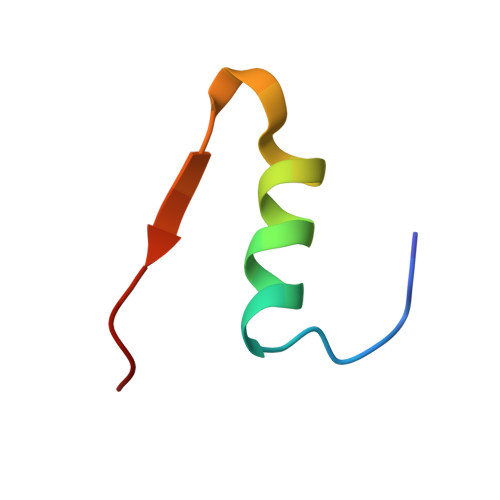Role of C-terminal B-chain residues in insulin assembly: the structure of hexameric LysB28ProB29-human insulin.
Ciszak, E., Beals, J.M., Frank, B.H., Baker, J.C., Carter, N.D., Smith, G.D.(1995) Structure 3: 615-622
- PubMed: 8590022
- DOI: https://doi.org/10.1016/s0969-2126(01)00195-2
- Primary Citation of Related Structures:
1LPH - PubMed Abstract:
LysB28ProB29-human insulin (Humalog), a fully potent insulin analog in which the prolyl, lysyl sequence at the C-terminal end of the B-chain is inverted, exhibits a decreased association of monomers to dimers leading to rapid in vivo absorption. This provides important benefits for the insulin-requiring diabetic. In spite of its monomeric nature, LysB28ProB29-human insulin can exist as a discrete hexameric structure in the presence of both zinc and phenol. Studies of the crystal structure of LysB28ProB29-human insulin in a hexameric complex were initiated to gain a molecular understanding of the effect of the sequence inversion on the analog's self-association properties and, consequently, its in vivo efficacy. Under the conditions reported, LysB28ProB29-human insulin crystallized as a T3Rf3 hexamer that is isomorphous with the uncomplexed T3Rf3 native human insulin hexamer previously known as '4Zn insulin'. The three-dimensional structure of the T3Rf3 hexamer was determined by X-ray crystallographic methods to a resolution of 2.3 A. The prolyl, lysyl sequence inversion leads to local conformational changes at the C termini of the B-chains which eliminate two critical hydrophobic interactions and weaken two terminal beta-sheet hydrogen bonds that stabilize the dimer. The loss of these native dimer interactions weakens the hexameric LysB28ProB29-human insulin complex formed in the presence of phenolic ligands. Thus, it is hypothesized that the diffusion of the phenolic ligands from the site of injection results in the dissociation of hexamers directly to monomers, thereby maintaining the rapid time-action of the monomeric analog in spite of the hexameric conformation in therapeutic formulations.
Organizational Affiliation:
Hauptman-Woodward Medical Research Institute, Inc., Buffalo, NY 14203, USA.


















